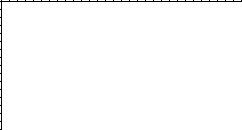Velocette wrote:These Arduino gizmos seem to be highly versatile but what they actually can do is a bit of a mystery to me. Is there a schematic somewhere that explains what all the inputs and out puts can be connected to that someone with just basic electronic knowhow could understand?
The Arduino is an open-source electronics prototyping platform. Open-source means that the design of the board itself is common knowledge and you could build your own. There are many variants of the Arduino - it's based on a family of small microcontrollers made by Atmel - think of it as a (very) cut down computer. There have been countless similar products over the years (Atmel, Mircochip PIC, and many more).
The attraction of the Arduino is the software that comes with it to write your programs. You hook the Arduino up to a computer with a USB cable (which also powers the board) and there's just one-click needed to put your code onto the chip. There are a huge number of libraries (software other people have written and published) to control motors, LCD panels, LED digit displays, network interfaces, temperature sensors, ultrasonic range sensors, etc...
In addition to the code available, Arduino has the concept of "shields" which are basically plug-in boards that contain sensors and control circuits like those listed above.
A "bare" Arduino board typically has a number of pins to connect stuff to, including Analog-In (you can sense variable voltages, like TPS??), Digial-In or -Out to control things like LEDs, buzzers, or connect push buttons to, and PWM which is Digital-Out that will switch on and off really quickly to control Stepper motors, Servo motors or vary the brightness of LEDs (connect three PWM pins to a tri-colour LED and you can get pretty much any colour in the rainbow by varying the relative brightness of the red, green and blue).
The Arduino is nice because you can develop on a biggish board on your workbench and then replace the Arduino itself with a mini-version (<£10) and leave that in the project instead of using your fancy one. They're low cost, low power, etc.
There are lots of different kinds available. The new Raspberry Pi is the same sort of idea, but it has USB connections for keyboard, mouse, printer, etc..., ethernet (ie internet), proper connections for a TV or monitor, as well as the analog and digital pins like the Arduino. It's a little more expensive, will draw more power but is FAR more capable as it uses a proper computer operating system and you can write proper programs and user interfaces for it.
The picture of a Bongo in my avatar was taken on an LCD panel I've got, powered by an Arduino and loaded with code to take a picture and put it on the screen.
Highly versatile - yes. Basic electronics - switches, LEDs, buzzers, sensors, motors, etc... The Arduino "shields" are the easiest way to get your head around what can be connected. Programming them is an art, but there are lots of examples and tutorials and although it's got a fairly mature programming language behind it (subset of C++), it's been made very accessible for newcomers.
Hope that helps.
Matt.
[Edit: here's a simple picture of an Arduino hooked up to some LEDs and a buzzer...]

. Just gets better by the day.
Absolutely brilliant.
